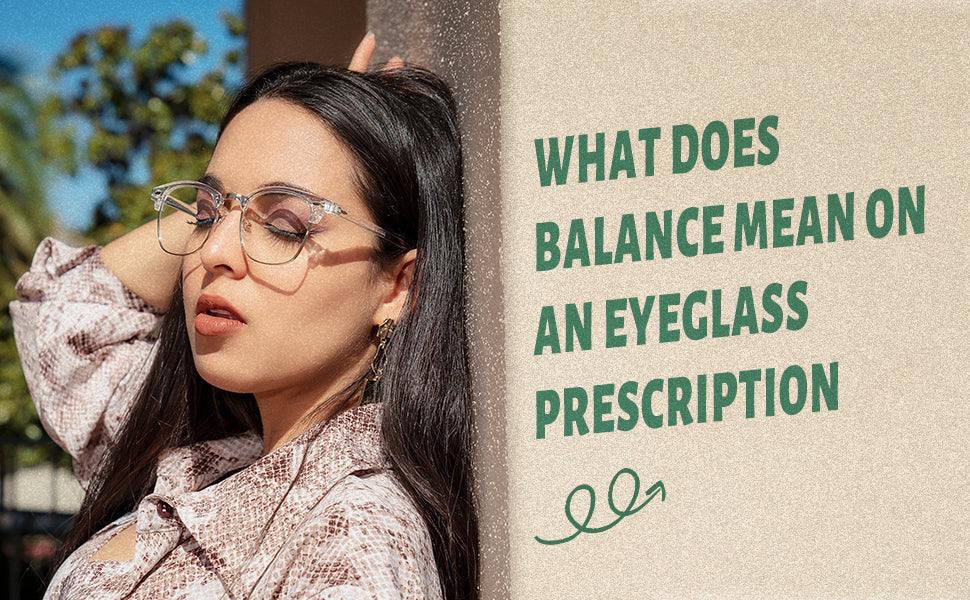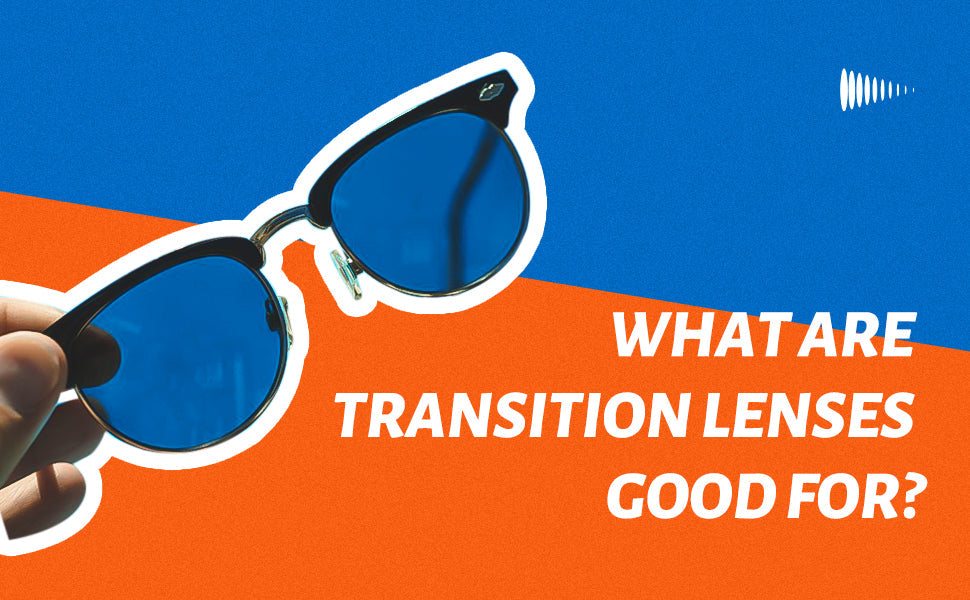
Everything You Should Know About Balance Prescription

What Does Balance Mean on an Eyeglass Prescription?
What does balance mean on an eyeglass prescription? It's a great question. Many people don't know there's more to prescription glasses than just power. Balance is one of the most important factors when picking out new glasses, and it can make the difference between a good and a bad pair. Today we will look closely at balance prescription and its associated topics. Let’s dive deeper!
A Complete Guide to Balance Prescription
The balance prescription indicates how much stronger or weaker your right eye prescription is compared to your left eye. Balance prescription is measured in diopters and is represented as a negative number.
For example, if one of your eyes requires +1.25 corrective lenses and the other requires +2.00 corrective lenses, then the difference between your eyes would be -1.25 diopters for that particular pair of glasses.
A positive balance prescription indicates that the prescription for one eye will be stronger than the other. You may have trouble seeing clearly when looking straight ahead or with both eyes open at once. This can further interfere with driving conditions, especially at night.
If you have a positive balance prescription, it's recommended to wear progressive lenses instead. These lenses eliminate the problem by providing clearer vision without compromising safety during travel on roads or highways where visibility is reduced due to limited light sources throughout dark hours.
Why Do You Need a Balance Prescription?
Balance prescription helps you see more clearly. When your eyes are in balance, they work together and can focus on objects close to you, far away from you, at different heights or distances. The result is clearer vision and less eyestrain.
If your prescription says "balance," this means that it's been customized to help you see distant things well (balance prescription for distance) as well as near things (balance prescription for reading).
What if Your Eyes Have Different Balance?
Every pair of glasses has a balance to them. This means that the prescription written on your eyeglasses or contact lens prescription is not precisely the same for both eyes.
If you get new glasses and notice that they don't feel right, it may be because one of your eyes needs a different balance than the other. This can cause headaches and eye problems if left untreated for too long.
There are several ways to fix this problem to have perfectly balanced glasses again! Here are some options:
You could buy two pairs of glasses: one with each prescription in each eye. This is probably the most expensive option, but it guarantees perfect balance whenever you look at something up close or far away!
If money is tight and you need new frames anyway (because they broke or something), try getting bifocal or progressive lenses instead—they'll work fine!
Another option would be prism correction (also called prism). You'll want your optometrist's help figuring out how much is needed, though—you could end up with super distorted vision if they misdiagnose this problem!
Talk to your eye doctor if you are concerned about getting new glasses and want to ensure they're perfectly balanced. They'll be able to tell you if one of your eyes needs a different prescription than the other and how much difference there is between them.
Then, they can help you decide which option would work best for your situation!
Does Balance Prescription Impact Your Eye Health?
Balance prescription is not the same as astigmatism. A balance prescription is related to how the eyes focus light, while astigmatism is related to how focused that light is by your cornea in front of your eye lens.
Balance prescription is vital for clear vision because if your eyes aren't correctly aligned due to muscle imbalance or other reasons, this can cause blurry vision and headaches.
If you have a balance prescription, you should check your eyes regularly, at least once every two years, so that any changes in your vision can be addressed immediately.
Things to Consider When You Have a Balance Prescription
When you have a balance prescription, it's essential to consider these factors.
Make sure your glasses are the right prescription. If they're not, they won't be able to correct your vision correctly.
Make sure your lenses aren't too thick or too thin. These must be just right for them to work correctly and prevent distortion of objects far away from you or close up.
Make sure you have the right frame for your face shape. This can significantly affect how comfortable and stylish your eyeglasses look!
Do your research when buying glasses! You want to find frames that fit well on your face and will help improve any problems you might have with seeing clearly while wearing them all day long!
Balance Prescription: Do's and Don'ts

If you have a balance prescription, it's essential to know how to care for your eyes and make sure your glasses fit correctly. You should:
Take care of your eyes by using eye drops if needed, washing your hands before touching them, and getting regular eye exams.
Wear your glasses when you need them, like when driving or reading in dim light.
Get a new pair of frames if they break or get broken in an accident.
If the vision in one eye is worse, be careful not to look at things too close up—it's easy to get double vision this way!
Instead, try looking at objects far away first, then gradually bringing them closer until they're clear again (you'll eventually reach infinity).
Also, make sure that whatever object/person you're looking at is not too bright—darken it with sunglasses if necessary.
Conclusion
So, as you can see, there are many aspects to balancing prescription. But no matter what kind of eye chart you use at the doctor's office or what kind of words they use on it, in the end, it all comes down to one thing: clear vision. The best prescription will help you see clearly and comfortably—and that’s what matters the most!






